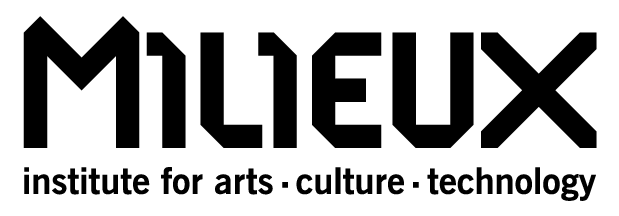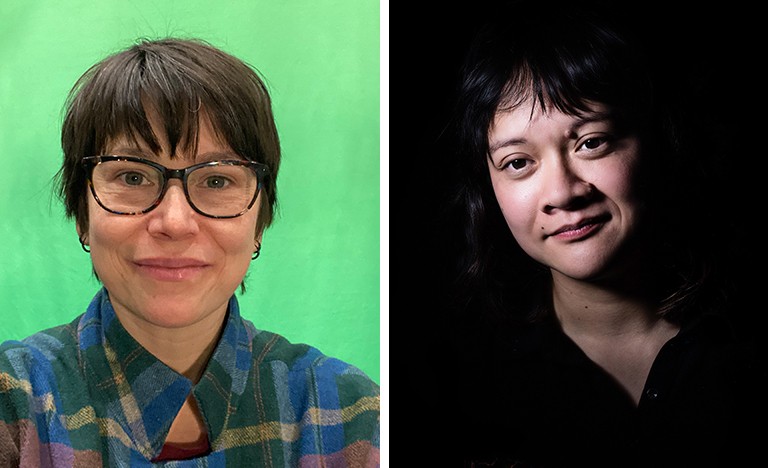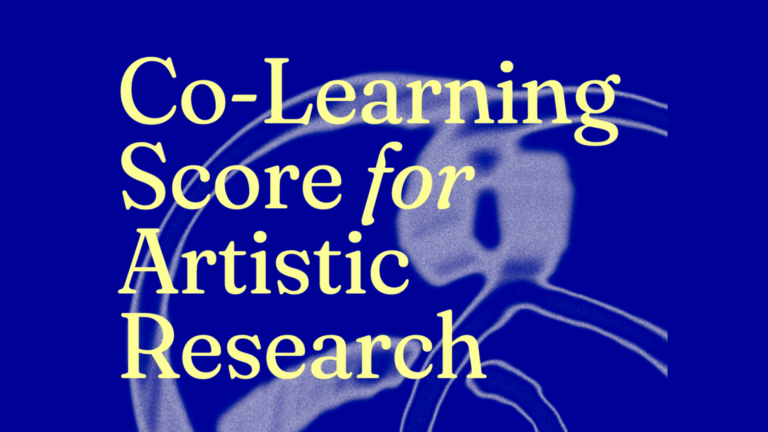A Reflection on the Exhibitions of In the Middle, a Chimera | PART I: EASTERN BLOC—jacqueline beaumont, Ojo Agi, Mark Igloliorte, Diyar Mayil, Timothy Thomasson, Philippe Vandal
Images by Roxanne Ross
“Intimacy is never separated from external elements, without which it could not be signified. Where we think we have caught hold of the Grail, we have only grasped a thing, and what is left in our hands is only a cooking pot…”
—Georges Bataille, The Accursed Share
In the Middle, a Chimera, the Milieux Institute’s year end-exhibition, takes the Socrates-as-chimera figure of Nietzsche’s reading and poses its own interpretation. The show presents an inquiry as to the identity of the chimera’s primary body, technology being at once a vehicle for and participant with the human. Does the human book-end the technological or vice versa? What constitutes the chimera—technology or our very composition as subjects? At times, the very means by which the question is posed denies us access to its answers. Invoking a horizontal rather than vertical curatorial mandate, the exhibition showcases emerging and established artists calling upon technology’s potential as both tool and willing collaborator. This strikes me as being representative of the movements and intersections occurring within the exhibition itself, by which autonomous selfhood and technology follow distinct yet mutually referential paths.
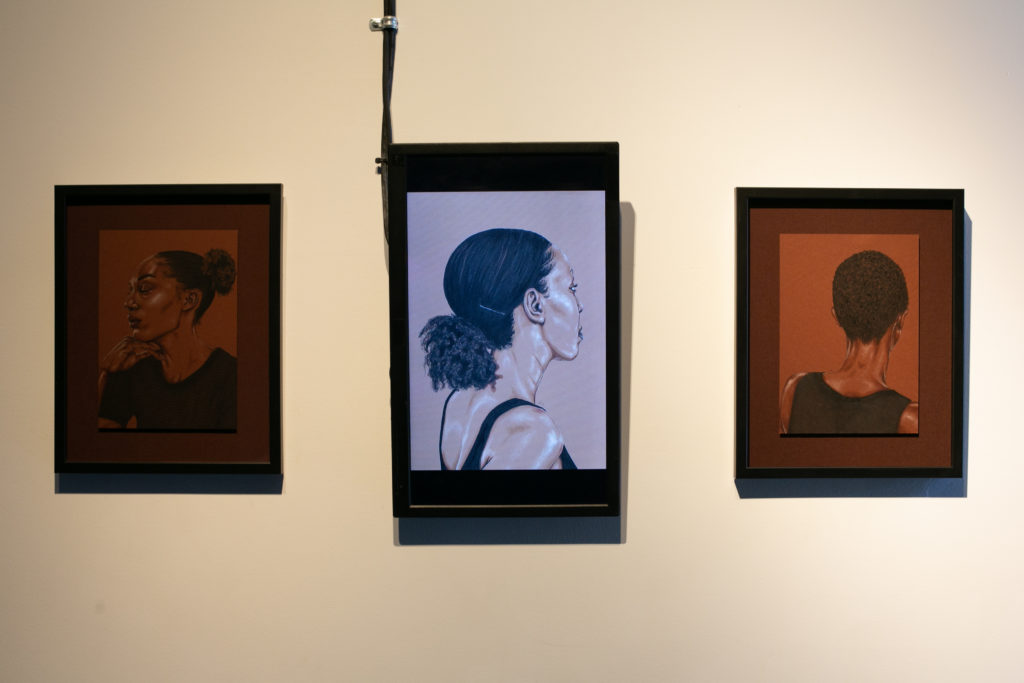
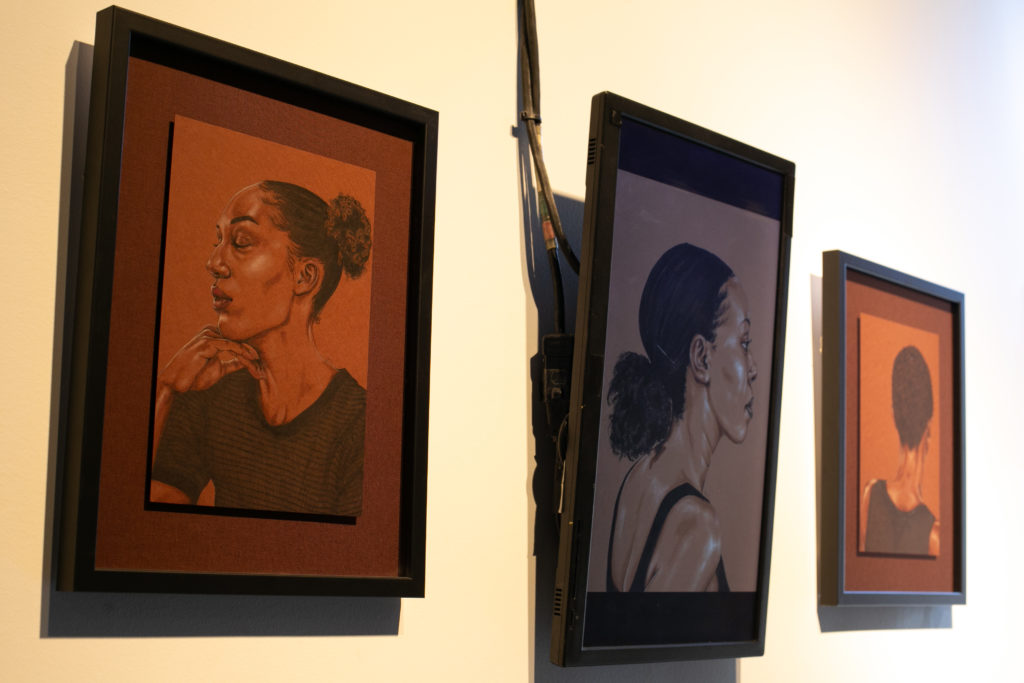
In an intimate series of figurative portraits, Ojo Agi’s There Is Space For You Here, engages a non-participatory act of refusal from the position of Black, femme identity. To look away is neither an active nor passive act, falling somewhere in the midway between assertion and unconcern. Such an act subverts autonomy’s expected presentation by declining engagement or opting to be an otherwise non-participant in the other’s gaze. Calling upon bell hooks’ feminist insistence on the importance of resistance in countering a systematic agenda of racist and sexist inscription and/or erasure, the work insists upon the subjects’ protection of selfhood by privileging self-care and inner seeing over any encounter with the viewer.
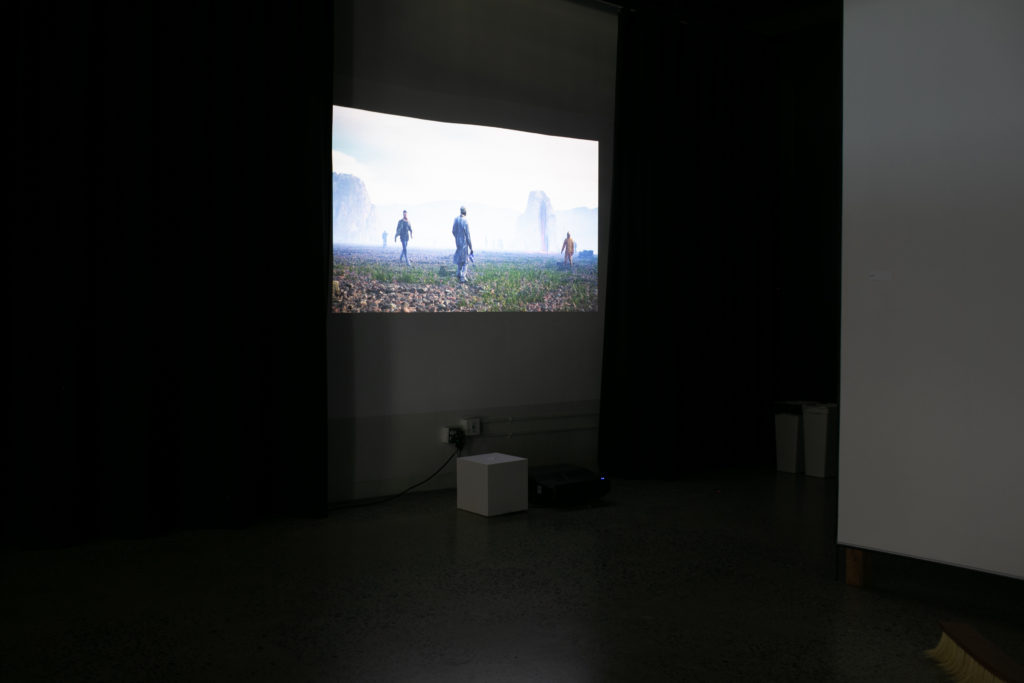
Autonomous movement is countered by the subject’s position in Timothy Thomasson’s I’m Feeling Lucky, all of which are drawn from Google Street View captures of unknown (and unknowing) passerby. These anonymous figures remain motionless (though in movement); stilled, their facial features rendered indistinguishable. The absence of any detail which might gesture towards a recognizable locale only adds to the uncanny sensation of being confined to a surface. The setting itself appears motionless but for the circular movement of the lens and inaudible burning of an immolating tree where firefighters attempt to quiet the flames ad infinitum. This deeply alienating and infinitely repeating loop or cycle is indicative of perhaps all that technology provides us at its surface—the infinitely replaceable subject whose ceaseless wandering across its landscape yields neither human touch nor any meaningful forward motion.
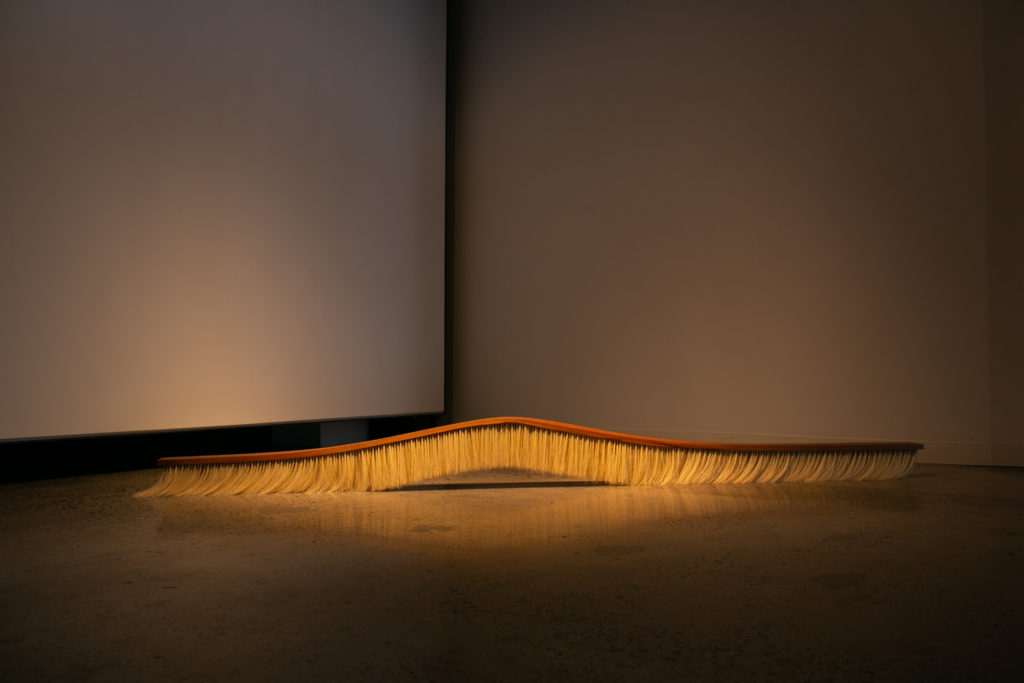

Gesturing towards a formal unrecognizability underlying the immediately apparent, Diyar Mayil’s installation, Broom, presents an oversized, warped “broom,” itself a beautifully constructed figure spanning the corner of the gallery that situates it. Broom invokes the sensuality of the human by way of a hand-rendered materiality, composed with brush spokes reminiscent of hair and immaculately-wrought wood with a lustre suggestive of skin. That the “broom” lacks any kind of assisting instrument (such as a handle), which might gesture towards its usability speaks to its refusal in engaging with tool status whilst calling referential meaning itself into question.
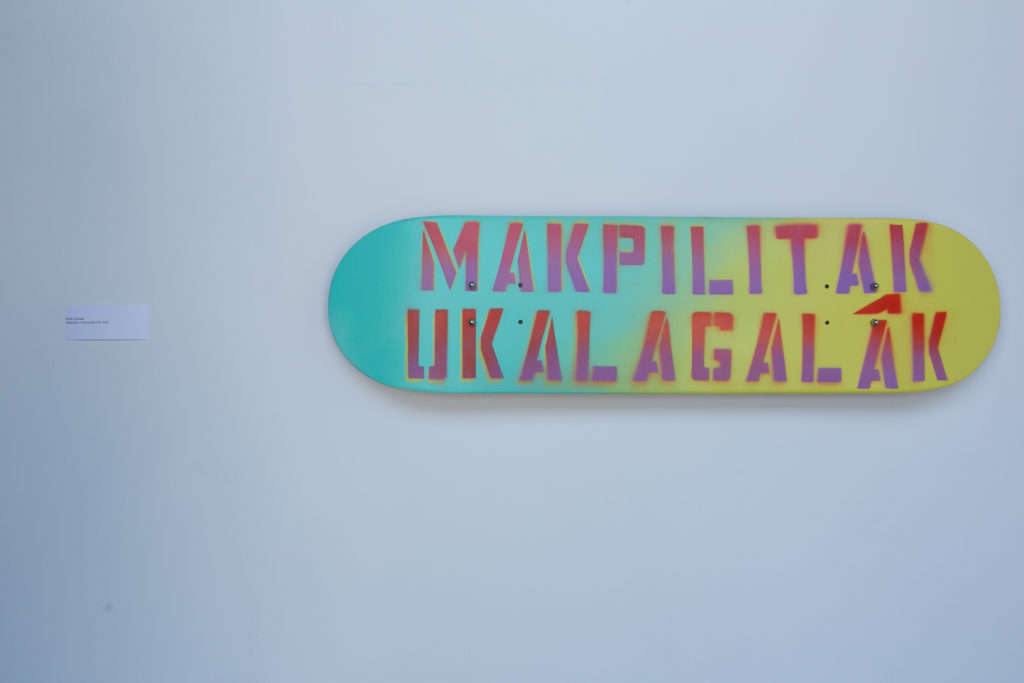
Mark Igloliorte’s Makpilitak UKalagalâk (Tile Talk) presents us the underside of a skateboard inscribed with the spray-painted eponymous phrase. By revealing the underside of the skateboard, that which is usually concealed when traversing the ground is presented as definitive; the spray-painted phrase is declarative in the manner of insignia. The recognizable materiality of the piece is again removed from tool status through the absence of wheels. Igloliorte’s piece is referential of both the land and that which passes over it, existing in dialogue with the past as well as fostering forward movement towards an indigenized future.
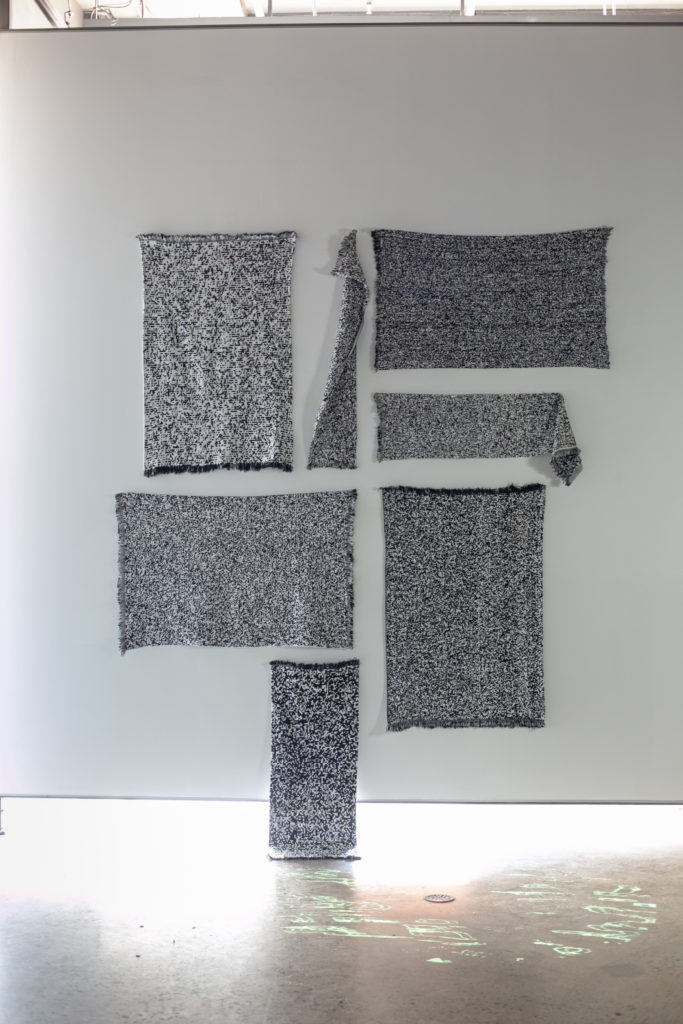
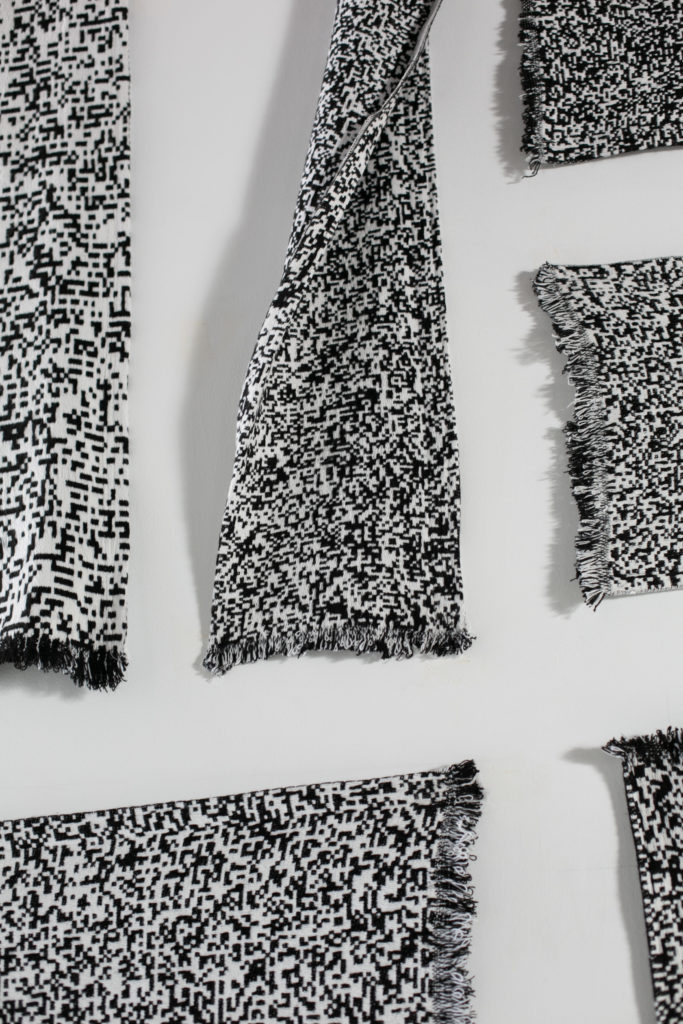
jacqueline beaumont’s post-binary genetic sequences exists at the intersection of the material and technological binary, as it were, of the vernissage. Making visible the code which inscribes both the human and technological, the materiality of woven rugs pinned to the wall gives way to a spiraling light effect of binary code cascading to a physical drain set in the gallery’s floor. In a process by which a lo-fi rendering of binary code is translated from genetic data to binary code, this visual information is transposed once again through being woven into cloth. The work and its many moments of transposition illuminates the true indistinction underlying our core presumptions of difference.
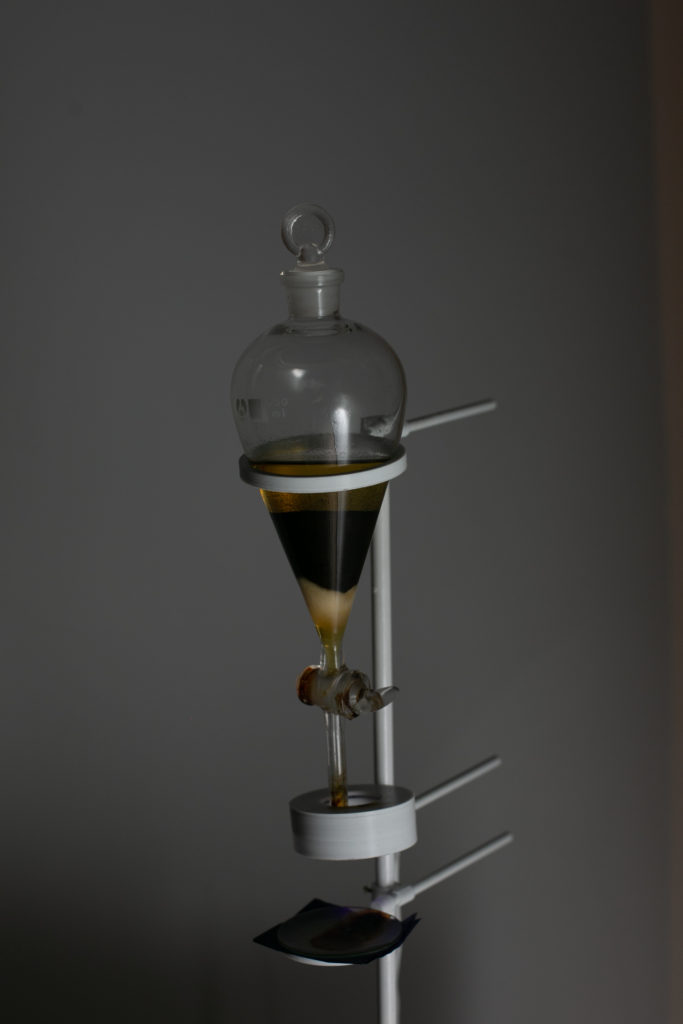
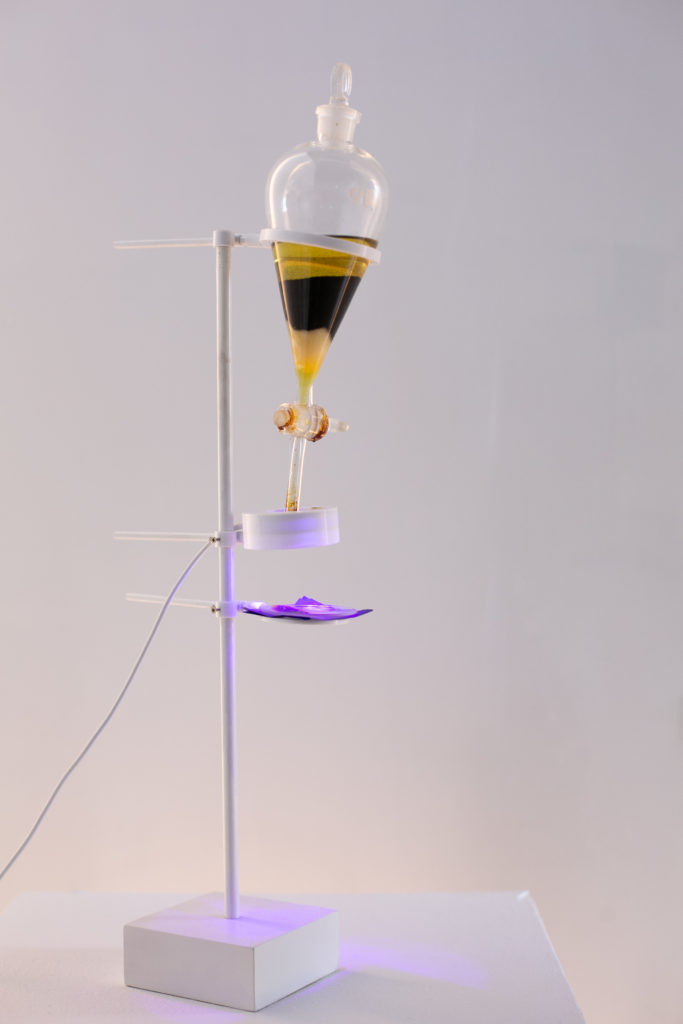
To added effect of the subversion of commonly scientific usages of technology, Philippe Vandal’s saturation by accumulation evokes a durational methodology whereby an apothecarist construction fosters the filtration of acetone though soil extracted from Montreal’s Champs des Possibles. The acetone filtrate evaporates upon the surface of a receiving lens, itself illuminated by ultraviolet LED lights. The traces left by this accumulative transfer have the appearance of a landscape seen from above, albeit at a much-reduced scale. The work is a material evocation of the continuing history of contaminant accumulation within urban environments, rephrasing the material of earth into an entirely unrecognizable (and uninhabitable) geography. Invoking at once the accuracy of modern chemistry and the archaic, moderately lit flasks of Goethe’s color experiments, the scientific nature of the tools at hand necessitate inquiry.
Standing outside after the vernissage, there were conversations around the urge to archive and make artwork archivable (should the art we produce be made with the intention to last “forever?”), and the unwillingness of students to fully invest in their studies. At some point, we all noticed the group was positioned in a semi-circle around a security camera. It was unclear, in that moment, what was being seen by whom. The multidisciplinary curative choices underlying In the Middle, a Chimera’s opening at the Eastern Bloc reorients the chimera’s gaze, or rather, calls into question the direction in which it’s facing.
